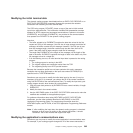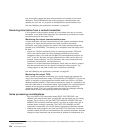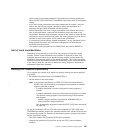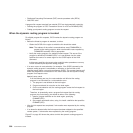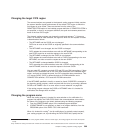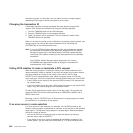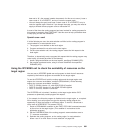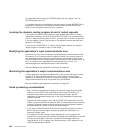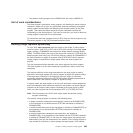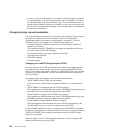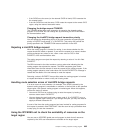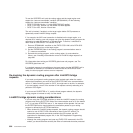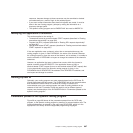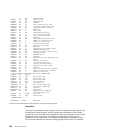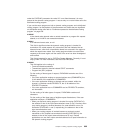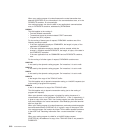
v The dynamic routing program can be RMODE ANY but must be AMODE 31.
Unit of work considerations
The client program, the dynamic routing program, and possibly the server program
constitute a single unit of work. Any recoverable resources owned by the dynamic
routing program could therefore be affected by the syncpoint activity of the client
program. This means that these resources may be committed or backed out
inadvertently by the client program. If you want to avoid this, you have to define the
routing program’s resources as non-recoverable.
For information about the syncpoint activity of DPL client and server programs, see
The server program, in the CICS Intercommunication Guide.
Routing bridge requests dynamically
To run a 3270 user transaction under the control of the bridge, a client program
must first issue a LINK, ECI or EXCI call to DFHL3270 running in the bridge router
region, passing a COMMAREA that contains the bridge inbound message header
(BRIH). The BRIH contains the name of the target user transaction. DFHL3270 (the
bridge program) then links to the CICS driver program, passing the COMMAREA. If
the user transaction is eligible for dynamic routing, DFHL3270 calls the dynamic
routing program to determine the target system where the driver program will
execute.
The user transaction always executes in the same region as the driver program.
The client request to run the user transaction is dynamically routed, not the user
transaction.
The resource definition of the target transaction on the router region is used to
determine if the bridge request to the driver program is eligible for dynamic routing.
If the target user transaction is not defined in the router region, the common
transaction definition specified on the DTRTRAN system initialization parameter is
used to determine if the request is eligible for dynamic routing.
In session mode, the target system of the first user transaction request determines
where all subsequent user transaction requests in the session are routed. Remote
requests can be routed to other regions connected to the router region by MRO
links, or to other systems that are connected by APPC (LUTYPE6.2) ISC links.
Note: The local system is the CICS router region where the dynamic routing
program is executing.
The dynamic routing program is invoked in the following cases:
v In single transaction mode when the transaction is defined as DYNAMIC(YES),
or the transaction is not defined and the DTRTRAN transaction is defined as
DYNAMIC(YES).
v In session mode when the first user transaction is defined as DYNAMIC(YES), or
the transaction is not defined and the DTRTRAN transaction is defined as
DYNAMIC(YES).
v In session mode when subsequent user transactions are defined as
DYNAMIC(YES), or the transaction is not defined and the DTRTRAN transaction
is defined as DYNAMIC(YES). In this case, the target system has already been
determined by the first user transaction of the session, so the routing program is
only invoked for notification; it cannot change the target system of the request.
Chapter 17. Writing a dynamic routing program 603



